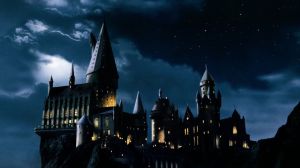Of all the Dungeons & Dragons magic items released this year, none have confounded players more than the Teeth of Dahlver-Nar. Originally introduced in the first Dungeon Master’s Guide, this legendary collection of teeth have had various abilities over the years, usually granting their users some vestige of an entity’s power when the user permanently switches out the tooth with one of their own. The Teeth of Dahlver-Nar were some of the many artifacts brought back to Dungeons & Dragons in the recently released Tasha’s Cauldron of Everything. This time, the twenty different teeth were all associated with different tales, and could either summon various creatures or could grant players permanent powers.
Videos by ComicBook.com
The various tales associated with the Teeth of Dahlver-Nar intrigued players, as they contained a smattering of Easter eggs and tantalizing references to other campaign settings and classic D&D stories. While players instantly recognized some references (Incendax’s Tooth, for instance, referred to a previous version of the Teeth of Dahlver-Nar, when they all came from a red dragon named Incednax), other teeth were complete mysteries. To find out more about these mysterious teeth and the secrets they hid, ComicBook.com spoke with Wes Schneider, the senior game designer for Dungeons & Dragons.

The first question we asked Schneider was whether the teeth’s tales contained any teases about what’s to come in Dungeons & Dragons, especially as some of the teeth references to other campaign settings, such as the long-desired Spelljammer. “I hate to give you one of the most rote possible answers, but if folks dig [the tales], and folks like them and want to know more, and there’s that buzz…yeah, absolutely,” Schneider said. “We’d be fools as a D&D team to be like, ‘Hm yeah, you seem enthusiastic, but maybe some other day.’”
Schneider did note that the teeth may contain some teases about future D&D products. “There might be one or two things on the list that we put in there knowing that in the next year or so it might pop up,” Schneider said.
Once the obvious question was out of the way, Schneider explained how the teeth made it into Tasha’s Cauldron of Everything. Schneider approached Jeremey Crawford, the lead designer of Tasha’s Cauldron of Everything, about working in some classic artifacts into the book’s magic item section. Schneider completed the initial draft for the teeth, writing up designs for 50 different teeth. After working with Ben Petrisor and Dan Dillon, the group whittled the list of teeth down to the twenty that made the final draft.
As for the tales associated with each tooth, Schneider noted that he wanted to tie at least some of the stories to D&D tales of old. “Going through and picking the stories, we wanted to be truthful to the history of the game,” Schneider said. “The Teeth of Dahlver-Nar is an artifact that has such a pedigree to it, not just going back to the original Dungeon Master’s Guide, but even Greek legends before that, since this was already such a trip down memory lane, we wanted to lean on stories that had come up in D&D from the past. They’re not all past references to things from the past, but many of them are straight out from past editions of the game.”
“I did a significant amount of work digging through old books, looking for initially names of stories, names of books, things that were described as legends from 1st and 2nd and 3rd Edition and working their way on the list,” Schneider continued. “One of the ones that immediately jumps to mind is the “Legendry of Phantoms and Ghosts,” which is the name of a book that supposedly the archmage Evard wrote. And part of the reason that it ends up summoning a giant octopus, and a mage, and a spectre is a direct reference to Evard who’s best known for the Evard’s Black Tentacles spell.”

Not every tooth is a direct reference to a past Dungeons & Dragons legend though. For instance, The Staring Cats of Uldun-dar was a new legend made up just for this version of the Teeth of Dahlver-Nar. “We wanted to hit on the stories and the names, and the concepts that make people be like, ‘I need to know that story,’” Schneider said, while explaining why the legends often were teases instead of more direct references. “That leads players to go ‘So what’s the story?’ Or, ‘Oh, there isn’t a story? I need to tell that story.’”
As for the balance that was needed between referencing past versions of the game and making them accessible to new fans, Schneider noted that the key was not getting bogged down in the past. “It’s important when we’re bringing them forward for a new generation, for a new readership, to make [the artifacts] accessible while also being respectful of what’s come before, but also not getting bogged down in that. It needs to be a continuation of the story. You see it also in Tashas’s Cauldron of Everything with the Mighty Servant of Leuk-O, for example. When the mighty servant was established, it had this big, weird beetle neck, but then it was used a whole bunch. And then like in 3rd Edition, there was an adventure where it was disassembled. But then here in Tasha’s, we talked about how it’s been reassembled. So you can see a continuation of a story that’s now evolved for almost 50 years. And it’s a really exciting thing to be a part of.”
ComicBook.com ended the interview by asking Schneider what his favorite “deep cut” was among all the teeth. “I think the one that I like the most is probably ‘The Mill Road Murders,’” Schneider said. “I’m a big horror fan, which means that 16 year old Wes back in the day was the horror fan and a D&D fan also maybe a Ravenloft fan. So, ‘The Mill Road Murders’ are a reference to a story that’s told in… I believe it is the third Van Richten’s Compendium. So in Van Richten’s Guide to Witches, there’s a discussion about hags extensively. And one of the stories in there is about the investigators pursuing a green hag and it gets the drop on them and whatnot. But the entire little story that plays out takes place in the domain of Dementlieu, in a city called Chateaufaux, and specifically on the Mill Road. So the green hag, the Mill Road, all of that is a sideways Ravenloft reference to Van Richten’s Compendium: Volume Three.”
Tasha’s Cauldron of Everything is available for sale now.








